Discover the magic of crystalline pottery
Have you ever stumbled upon a piece of pottery that seemed to shimmer with an otherworldly glow? That's the enchanting allure of crystalline pottery, a captivating art form that marries creativity with meticulous craftsmanship. Imagine a canvas where vibrant colors dance and intricate patterns unfold like a mesmerizing story—this is what crystalline pottery offers. It’s not just about creating a functional item; it’s about crafting a piece of art that tells a tale of its own.
Crystalline pottery is like a secret garden of colors and shapes, where each piece is uniquely beautiful and often unpredictable. The process behind this art form is both scientific and artistic, involving a fascinating interplay of materials, heat, and timing. When you look closely at a crystalline pottery piece, you might see a world of tiny crystals that have formed during the firing process, each one a testament to the potter's skill and the magic of the materials used.
As we delve deeper into the world of crystalline pottery, we’ll uncover its rich history, explore the intricate techniques used to create these stunning pieces, and appreciate the aesthetic appeal that makes them so desirable. Whether you’re an art enthusiast, a budding potter, or simply curious about this unique craft, there’s something here for everyone. So, grab a cup of your favorite beverage and let’s embark on this journey into the mesmerizing universe of crystalline pottery!
Uncover the origins of crystalline pottery, tracing its development through various cultures and time periods. Learn how this art form has evolved and influenced contemporary ceramic practices.
Delve into the intricate techniques that define crystalline pottery. This section covers the processes of glazing, firing, and the unique methods that create stunning crystalline patterns.
Discover the various glazing techniques employed in crystalline pottery. Each method contributes to the final aesthetic, creating a diverse range of textures and colors.
Explore the different types of glazes used in crystalline pottery, from transparent to opaque. Each type offers unique effects and influences the final appearance of the piece.
Learn about the various application methods for glazes, including dipping, spraying, and brushing. Each technique has its own advantages and contributes to the overall design.
Understand the critical role of the firing process in crystalline pottery. This section explains how temperature and atmosphere affect the growth of crystals during firing.
Examine the captivating beauty of crystalline pottery. This section highlights the visual impact of crystalline patterns and how they enhance the artistic value of each piece.
Explore the stunning color variations found in crystalline pottery. Discover how different glazes and firing techniques contribute to the vibrant hues and subtle shades.
Learn about the fascinating patterns that emerge in crystalline pottery. This section discusses the science behind crystal growth and its artistic implications.
For those inspired to try their hand at crystalline pottery, this section offers tips and guidance on getting started. Discover essential tools and materials needed for your creative journey.
Identify the key tools and materials required for creating crystalline pottery. Understanding these essentials is crucial for beginners looking to explore this art form.
Follow a step-by-step guide to creating your own crystalline pottery. This practical approach will help you navigate the process from start to finish, ensuring a successful outcome.
Curious about crystalline pottery? Here are some common questions and answers that might help you understand this fascinating art form better:
- What is crystalline pottery? Crystalline pottery is a type of ceramic that features unique crystal formations on its surface, created during the firing process.
- How is it made? The process involves glazing the pottery and firing it at high temperatures, which allows crystals to form.
- Can anyone create crystalline pottery? Yes! With the right tools, materials, and guidance, anyone can learn to create their own stunning pieces.
- What are the best glazes to use? There are many types of glazes, each offering different effects. Experimenting with various glazes can lead to unique results.
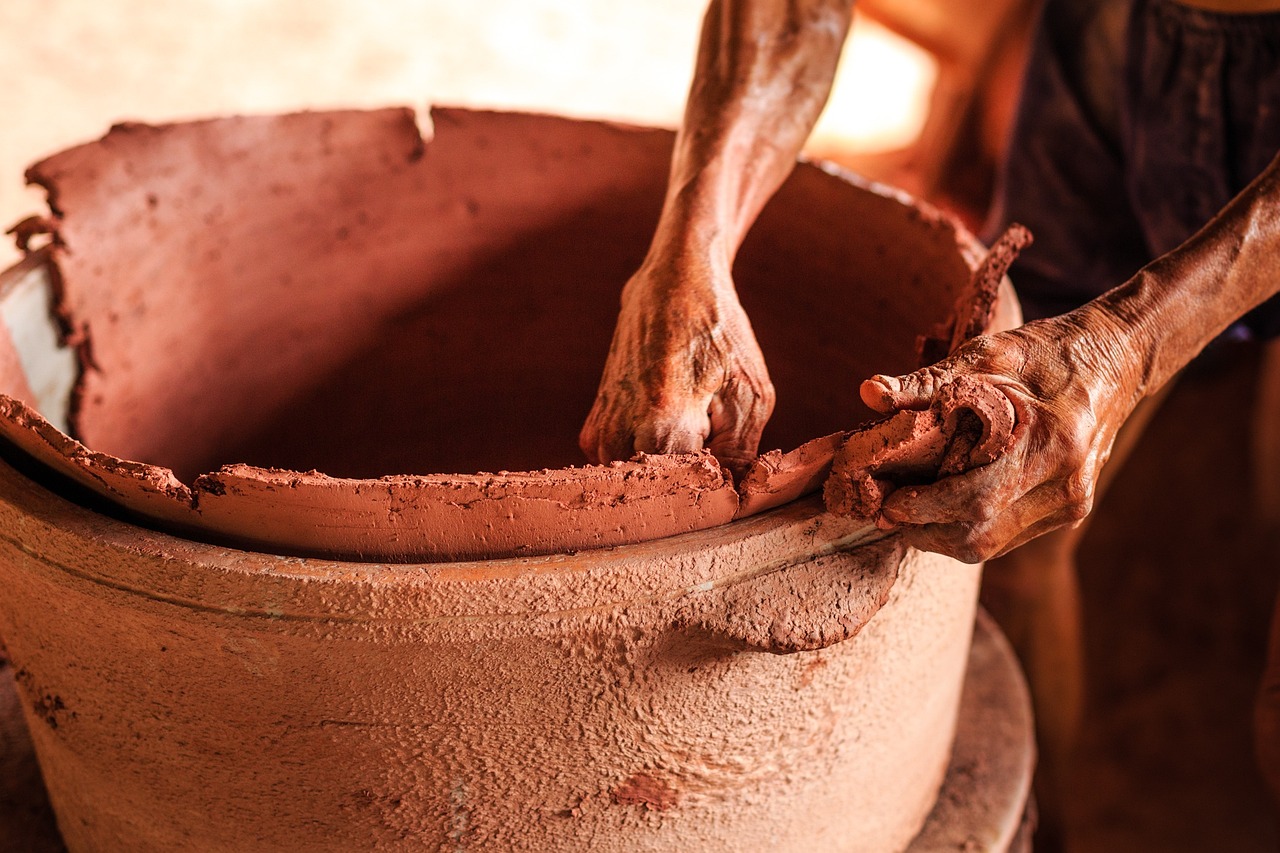
The History of Crystalline Pottery
Crystalline pottery is not just an art form; it’s a captivating journey through time, culture, and creativity. Its origins can be traced back to ancient civilizations, where the interplay of fire, earth, and water gave birth to some of the most beautiful ceramic forms. The roots of crystalline pottery can be found in the traditional ceramics of China during the Tang dynasty (618-907 AD), where artisans began experimenting with glazes that would eventually lead to the stunning crystalline effects we admire today.
As we move through history, we see that crystalline pottery has been embraced by various cultures, each adding its own unique twist. In the 18th century, European potters were inspired by Chinese ceramics, which sparked a wave of innovation. They began to explore new glazing techniques and firing methods, leading to the development of their own crystalline pieces. This period marked a significant evolution in the art form, as potters sought to replicate and enhance the mesmerizing beauty found in their Eastern counterparts.
Fast forward to the 20th century, and crystalline pottery began to gain prominence in the United States. Artists like Warren Mackenzie and Peter Voulkos played pivotal roles in popularizing this art form, blending traditional techniques with modern aesthetics. They pushed the boundaries of what was possible, experimenting with different materials and firing atmospheres, resulting in a rich tapestry of styles and expressions. Today, crystalline pottery is celebrated not only for its beauty but also for its technical complexity, making it a favorite among collectors and artists alike.
In contemporary times, the fascination with crystalline pottery continues to grow. Artists from around the globe are exploring innovative techniques, incorporating new materials, and even utilizing technology to enhance their work. The beauty of crystalline pottery lies in its unpredictability; each piece is a unique creation, a testament to the skill of the artist and the whims of nature. As we look to the future, it’s clear that crystalline pottery will continue to evolve, inspiring new generations of artisans to explore this enchanting medium.
- What is crystalline pottery? Crystalline pottery is a unique ceramic art form characterized by the formation of crystals within the glaze during the firing process.
- Where did crystalline pottery originate? Its origins can be traced back to ancient China, particularly during the Tang dynasty.
- How is crystalline pottery made? The process involves glazing, firing, and specific techniques that promote crystal growth.
- Can anyone create crystalline pottery? Absolutely! With the right tools, materials, and a bit of practice, anyone can try their hand at this beautiful art form.
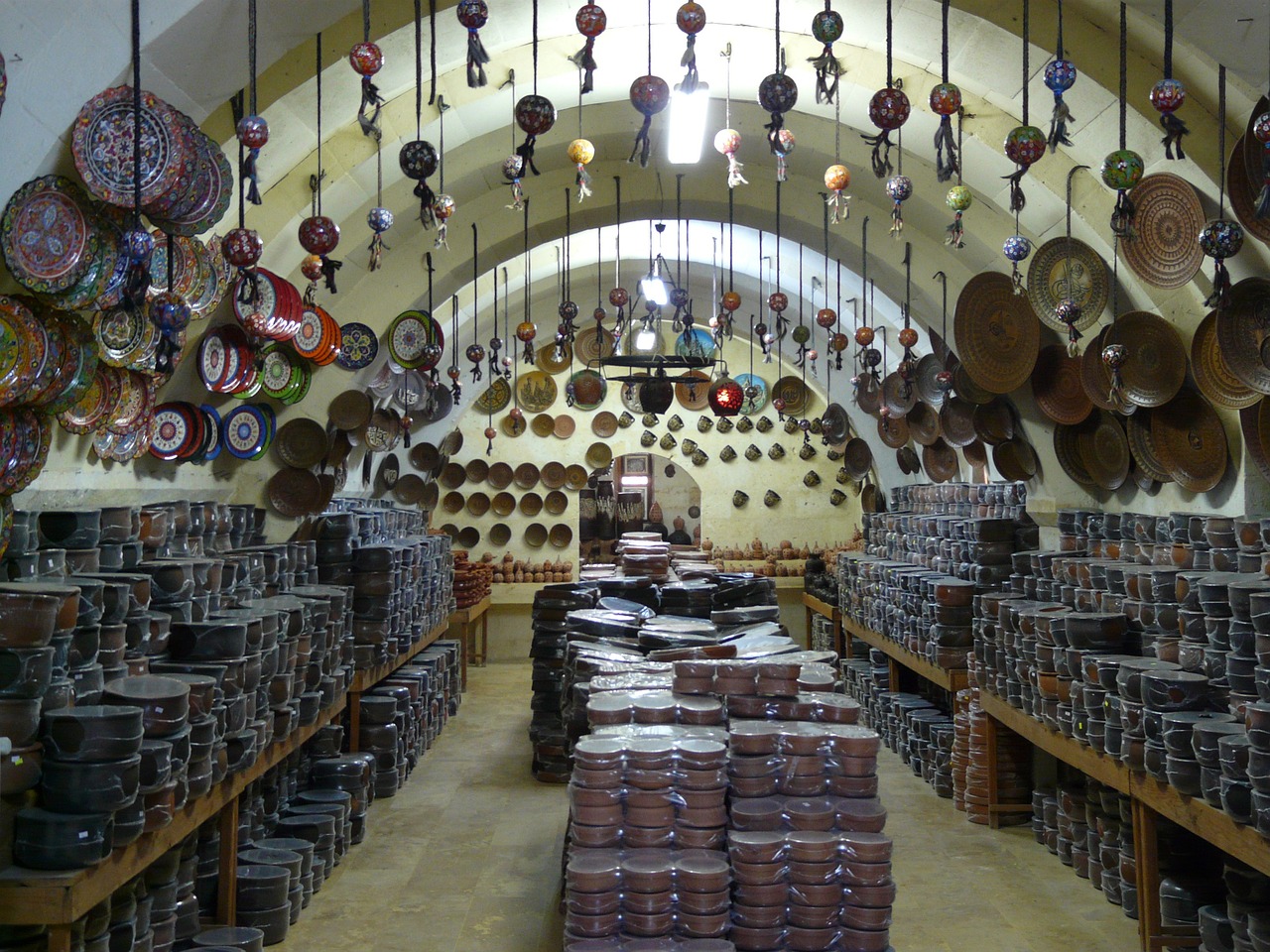
Techniques Used in Crystalline Pottery
When it comes to crystalline pottery, the techniques involved are as intricate as the beautiful patterns that emerge from them. This art form marries creativity with precision, requiring a deep understanding of both glazing and firing processes. At its core, crystalline pottery is all about manipulating materials and conditions to achieve stunning visual effects. The dance between heat, glaze, and clay creates a unique outcome that is both unpredictable and mesmerizing. Let's delve into the techniques that make crystalline pottery a true marvel of craftsmanship.
The glazing process plays a pivotal role in crystalline pottery, acting as the canvas upon which the artist paints their vision. Each glazing technique contributes uniquely to the final aesthetic, resulting in a diverse array of textures and colors. Artists often choose from several glazing methods, each with its own flair:
- Dipping: This method involves immersing the pottery piece in a glaze solution, allowing for an even coat that can create a smooth, glossy finish.
- Spraying: Using an airbrush or spray gun, artists can achieve a fine mist of glaze, which can add depth and complexity to the surface.
- Brushing: This traditional technique allows for precision, enabling detailed designs and patterns to be applied directly onto the pottery.
Each of these application methods has its own advantages, and the choice often depends on the desired outcome. For instance, dipping may be ideal for larger pieces, while brushing allows for intricate details that highlight the artist's skill.
Understanding the types of glazes is essential for anyone looking to create crystalline pottery. The glaze not only influences the color but also the texture and overall appearance of the final piece. Here are some common types of glazes used:
- Transparent Glazes: These glazes allow the underlying clay body to show through, enhancing the natural beauty of the pottery.
- Opaque Glazes: Opaque glazes provide a solid color and can completely mask the clay body, offering a bold aesthetic.
- Textured Glazes: These glazes create a tactile surface that can add depth and interest to the piece.
Each type of glaze brings its own character to the pottery, and the right choice can elevate a piece from ordinary to extraordinary.
Equally important to the artistry of crystalline pottery is the firing process, which is where the magic truly happens. The temperature and atmosphere during firing are crucial for the growth of crystals within the glaze. Typically, crystalline pottery is fired in a kiln at high temperatures, often reaching upwards of 2200°F (1204°C). This intense heat causes the glaze to melt and then cool down gradually, allowing crystals to form as the piece transitions from liquid to solid.
Different firing atmospheres, such as oxidation or reduction, can significantly impact the final outcome. In oxidation firing, oxygen is present, which can enhance the brightness of colors, while reduction firing, where oxygen is limited, can produce richer, darker hues. Understanding these variables is key to mastering the art of crystalline pottery.
In conclusion, the techniques used in crystalline pottery are a blend of art and science. From the choice of glazing methods to the intricacies of the firing process, each step is crucial in creating these stunning ceramic masterpieces. The beauty of crystalline pottery lies not only in its visual appeal but also in the skill and knowledge required to bring it to life.
Q: What is crystalline pottery?
A: Crystalline pottery is a unique form of ceramics that features stunning crystalline patterns formed during the glazing and firing processes.
Q: How do I start creating my own crystalline pottery?
A: Begin by gathering essential tools and materials, and follow a step-by-step guide to navigate the glazing and firing processes effectively.
Q: What types of glazes are best for crystalline pottery?
A: Both transparent and opaque glazes can be used, depending on the desired effect. Textured glazes can also add unique characteristics to your pieces.
Q: Can I experiment with different firing atmospheres?
A: Absolutely! Experimenting with oxidation and reduction firing can yield beautiful and varied results in your crystalline pottery.
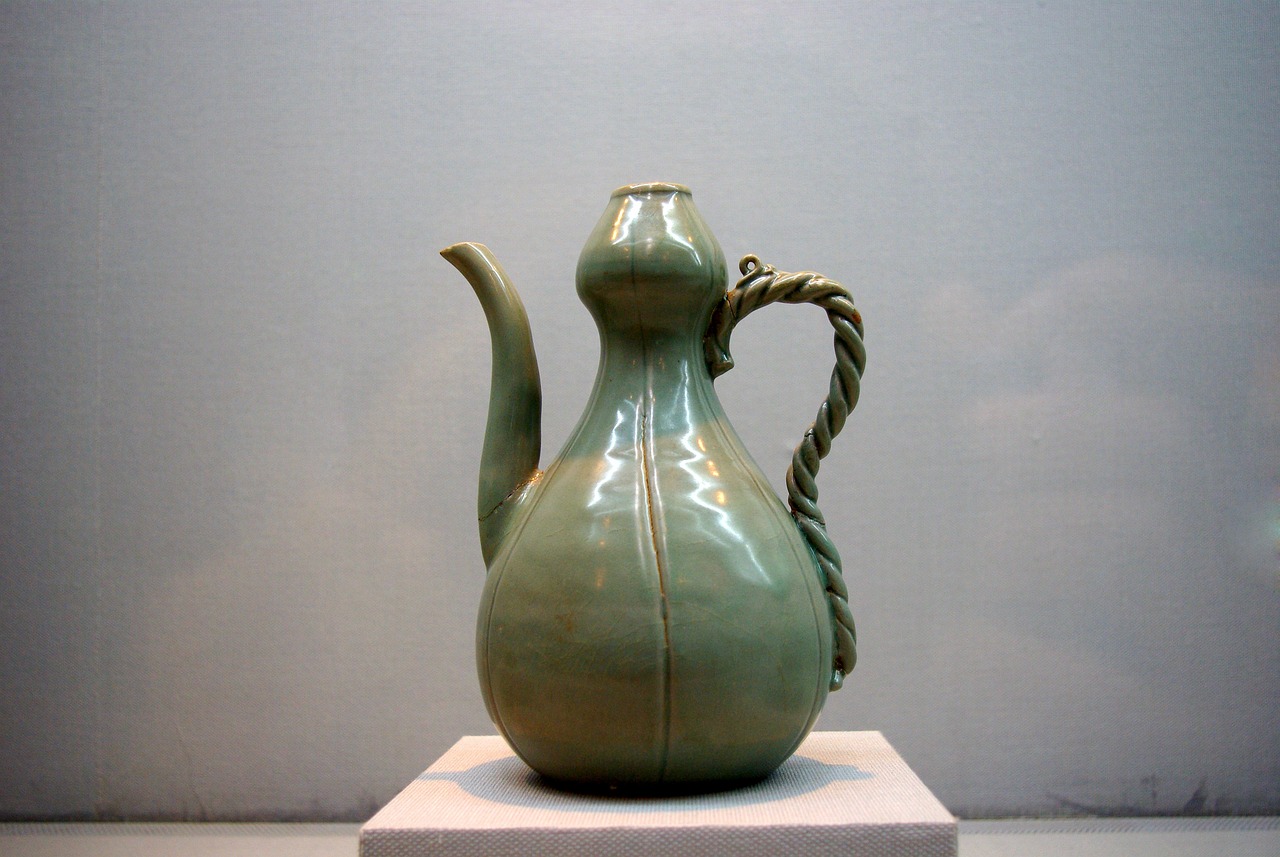
Glazing Techniques
When it comes to crystalline pottery, the magic truly begins with the glazing techniques employed. Glazing is not just a final touch; it’s an intricate dance of chemistry and artistry that transforms a simple clay piece into a stunning masterpiece. The right glaze can enhance the beauty of the pottery, adding depth and vibrancy to the crystalline patterns that emerge during firing. But how do artists achieve such breathtaking results? Let’s dive into the world of glazing techniques and uncover the secrets behind this enchanting process.
One of the most fascinating aspects of glazing in crystalline pottery is the variety of methods available to artists. Each technique brings its own unique flair to the final piece, allowing for endless creativity. Here are some popular glazing techniques:
- Dipping: This method involves immersing the pottery piece into a bucket of glaze. It's quick and effective, ensuring an even coating. However, it requires a steady hand to avoid drips and runs.
- Brushing: With a brush in hand, artists can apply glaze with precision. This technique allows for layering and detailing, perfect for those intricate designs that crystalline pottery is known for.
- Spraying: For a more modern approach, spraying glaze onto the piece can create a soft, even finish. This method is excellent for achieving gradients and subtle color transitions.
Each of these application methods comes with its own set of advantages and challenges. For instance, while dipping is fast, it may not provide the same level of detail as brushing. On the other hand, brushing allows for intricate designs but can be time-consuming. The choice of technique often depends on the desired outcome and the artist’s personal style.
Moreover, the type of glaze used plays a crucial role in the final aesthetic. From glossy to matte finishes, the glaze can significantly affect how light interacts with the surface of the pottery. Some artists even experiment with layering different glazes to create complex textures and colors, resulting in breathtaking visual effects. Imagine the thrill of unveiling a piece that sparkles with unexpected hues and patterns, each telling its own story through the interplay of glazes.
In conclusion, mastering glazing techniques is essential for anyone looking to create stunning crystalline pottery. Whether you choose to dip, brush, or spray, each method offers a unique way to express your creativity. So grab your tools and let your imagination run wild—because in the world of crystalline pottery, the only limit is your creativity!
What is crystalline pottery?
Crystalline pottery is a unique form of ceramic art that features stunning, often intricate patterns created by the growth of crystals during the firing process. It combines traditional pottery techniques with innovative glazing and firing methods.
How do I create crystalline patterns?
To create crystalline patterns, you need to use specific glazes that promote crystal growth during firing. The firing temperature and atmosphere must also be carefully controlled to achieve the desired results.
Can beginners try crystalline pottery?
Absolutely! While it may require some practice, beginners can certainly explore crystalline pottery. Start with basic tools and materials, and follow step-by-step guides to help you along the way.
What tools do I need to get started?
Essential tools for crystalline pottery include clay, glazes, brushes, a spray gun (if you choose that method), and a kiln for firing your pieces. Don’t forget safety gear like gloves and masks when working with glazes!
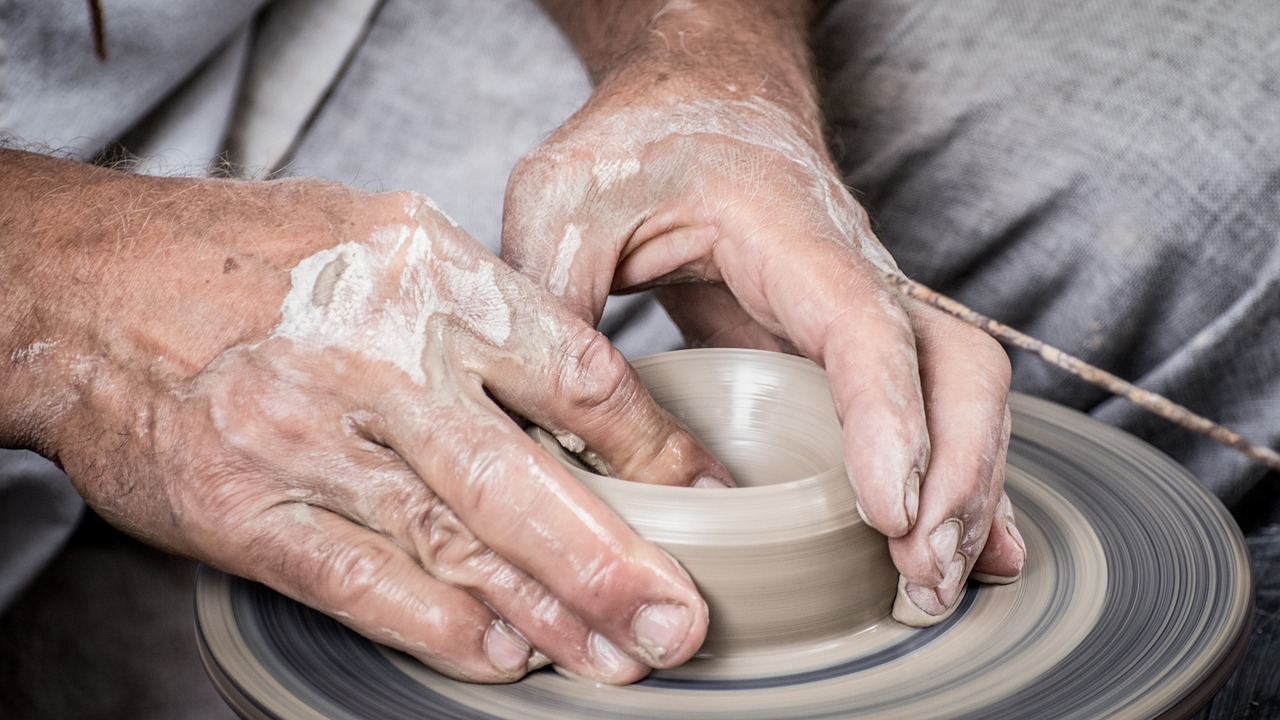
Types of Glazes
When it comes to crystalline pottery, the choice of glaze is absolutely crucial. Different types of glazes can completely transform a piece, offering a wide array of textures, colors, and finishes. Understanding the various types of glazes can be like unlocking a treasure chest of creative possibilities. Here, we’ll explore some of the most popular types of glazes used in crystalline pottery, each with its unique characteristics.
Transparent glazes are perhaps the most commonly used in crystalline pottery. They allow the beauty of the clay body and the intricate crystalline patterns to shine through. This type of glaze creates a glass-like finish that enhances the visual depth of the piece, making it appear almost luminous. Imagine holding a piece of pottery that seems to glow from within; that's the magic of transparent glazes!
On the other hand, opaque glazes offer a completely different aesthetic. These glazes hide the underlying clay body and the crystalline formations, instead providing a solid color that can be bold or subtle. Opaque glazes can create a striking contrast against the delicate crystalline patterns, making them pop in a way that’s visually captivating. Think of it as wearing a vibrant scarf over a simple outfit; it draws the eye and adds flair!
There are also semi-transparent glazes, which fall somewhere in between transparent and opaque. These glazes allow some light to penetrate while still providing a hint of color. They can create a soft, ethereal effect on pottery, almost like a misty morning where shapes and colors blend together. This type of glaze can be particularly effective when layered over other glazes, resulting in complex color interactions that are nothing short of mesmerizing.
Another fascinating category is crystalline glazes themselves. These glazes are specifically formulated to encourage the growth of crystals during the firing process. The result is a stunning display of crystalline formations that can vary widely in size, shape, and color. When you see a piece with a crystalline glaze, it’s like witnessing a miniature landscape frozen in time, with each crystal telling its own story.
In addition to these main types, there are several other specialized glazes that potters might explore, such as:
- Textured glazes: These glazes create a tactile surface that invites touch and interaction.
- Raku glazes: Used in the raku firing process, these glazes can yield unpredictable and dramatic results.
- Celadon glazes: Often associated with East Asian pottery, these glazes provide a beautiful jade-like finish.
Choosing the right glaze can be a bit like selecting the perfect outfit for a special occasion. It’s all about finding the right balance that complements the form and function of the piece. With so many options available, potters can experiment and mix glazes to create unique effects that reflect their personal style and artistic vision. So, whether you’re drawn to the clarity of transparent glazes or the boldness of opaque ones, there’s a world of glazes waiting to be explored in crystalline pottery!
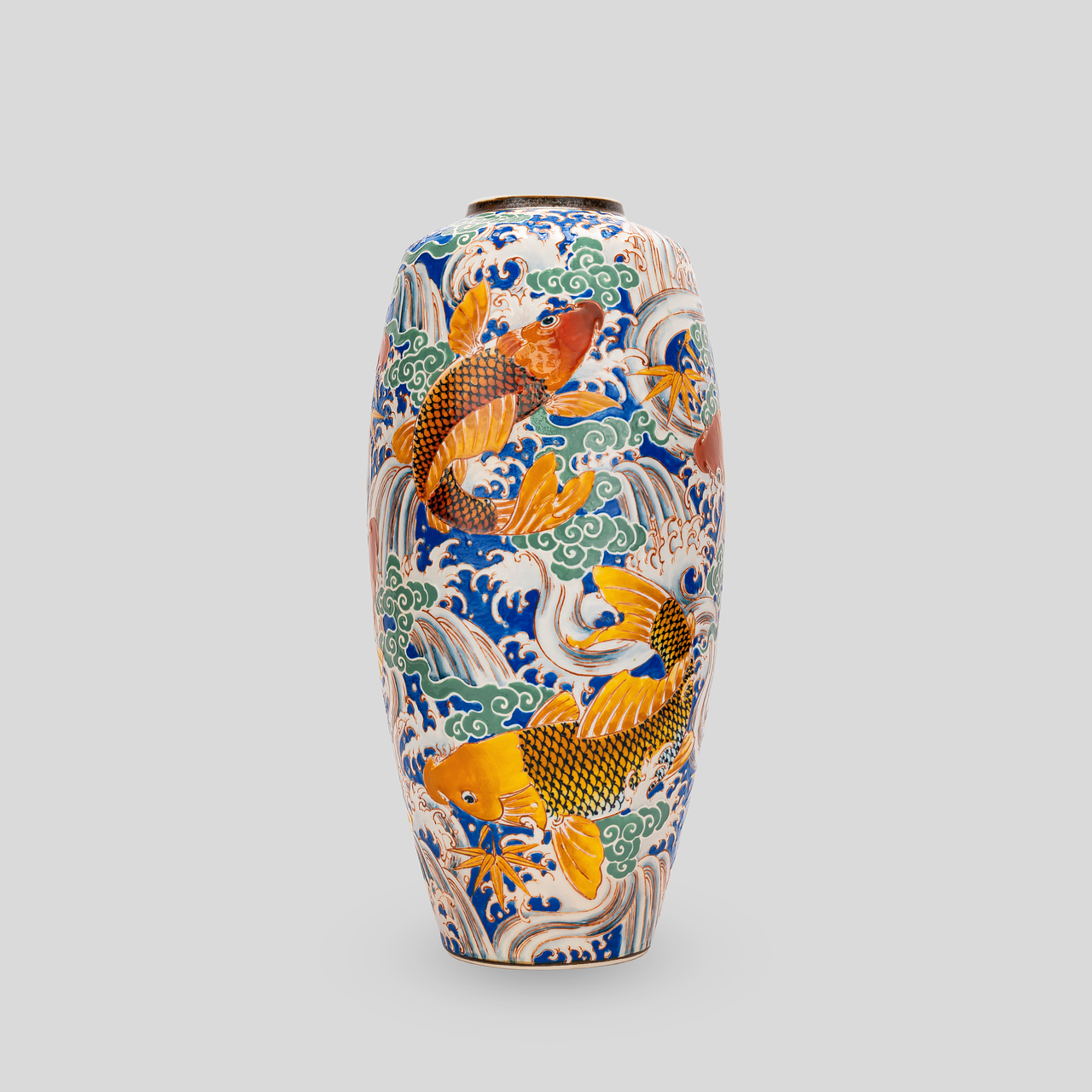
Application Methods
When it comes to applying glazes in crystalline pottery, the method you choose can significantly influence the final result. Each application technique has its own charm and intricacies, allowing artists to express their creativity in unique ways. The three most common methods are dipping, spraying, and brushing, and each brings something special to the table.
First up is the dipping method. This technique is akin to taking a refreshing plunge into a pool on a hot day. The piece is submerged into a container filled with glaze, allowing it to soak up the liquid. This method ensures an even coating, but it requires precision to avoid drips or uneven surfaces. Artists often use dipping for larger pieces where uniformity is key. The beauty of dipping lies in its ability to create a thick, luscious layer of glaze that can produce stunning effects once fired.
Next, we have spraying, which is like painting with a fine mist. Using a spray gun, artists can achieve a soft, even application of glaze that can range from light to intense. This method is particularly effective for creating gradients and layered effects. The control offered by spraying allows for intricate designs and patterns to emerge, making it a favorite among those who wish to add a touch of finesse to their pottery. However, it does require practice to master the technique and achieve the desired results.
Lastly, the brushing method allows for the most personal touch. It’s similar to using a paintbrush on a canvas, where the artist can apply the glaze with precision and creativity. This technique is perfect for adding details or creating specific patterns. With brushing, artists can build up layers of color and texture, leading to a more dynamic and personalized finish. However, it can be time-consuming and requires a steady hand to avoid streaks or uneven coverage.
Each of these methods can be used independently or combined to create unique effects, making the world of crystalline pottery a playground for creativity. Ultimately, the choice of application method comes down to the artist's vision and the specific characteristics they wish to highlight in their work. Whether you're diving into the glaze, misting it on, or painting it with care, the application method is a crucial step in crafting those mesmerizing crystalline patterns.
- What is crystalline pottery? Crystalline pottery is a unique art form that features stunning crystalline patterns created during the glazing and firing processes.
- Can I create crystalline pottery at home? Yes! With the right tools, materials, and techniques, anyone can try their hand at creating crystalline pottery.
- What types of glazes are best for crystalline pottery? Transparent and opaque glazes can both be used, but the choice depends on the desired effect and the specific patterns you want to achieve.
- How does the firing process affect the crystals? The temperature and atmosphere during firing play a critical role in the growth and formation of crystals, impacting the final appearance of the pottery.
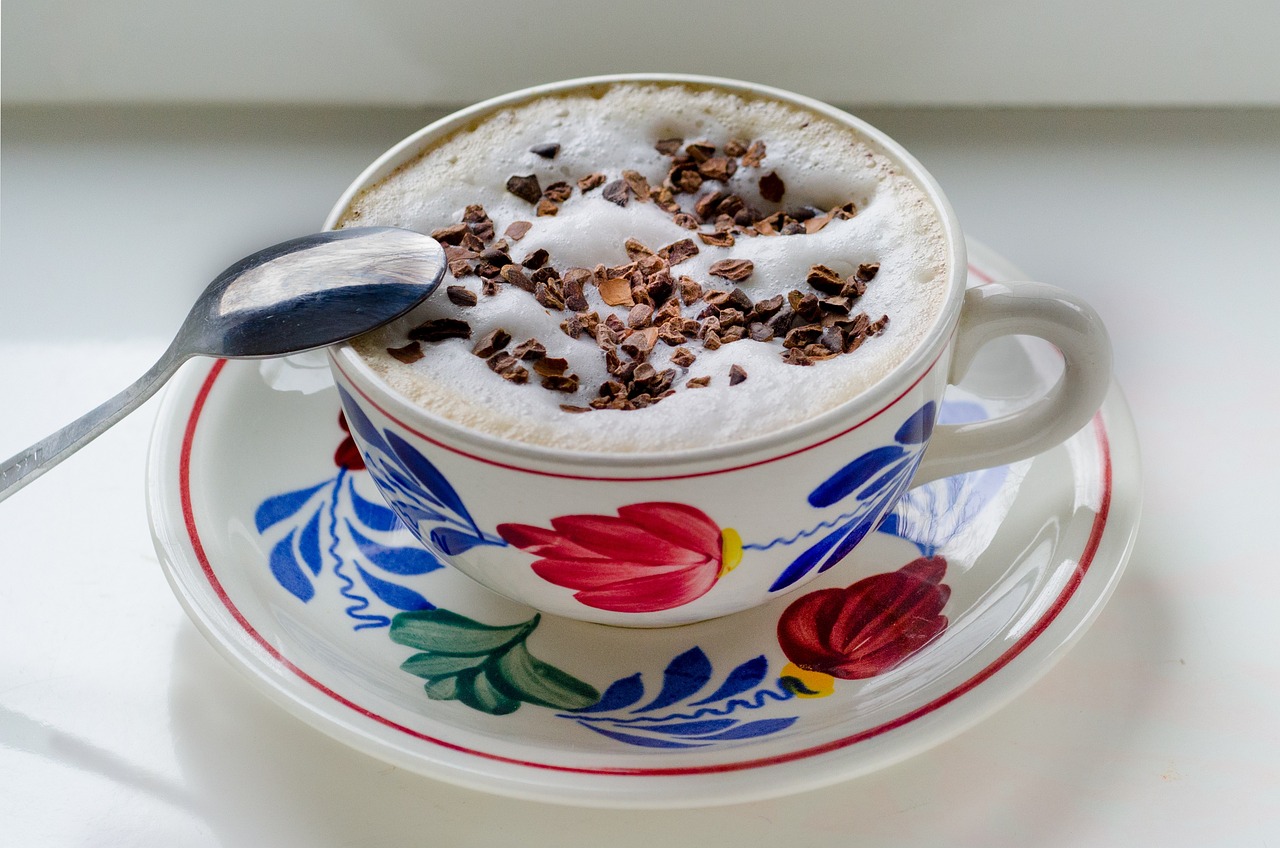
Firing Process
The firing process in crystalline pottery is nothing short of a magical transformation. It's during this stage that the raw clay and glaze are subjected to extreme temperatures, allowing them to evolve into stunning ceramic masterpieces. But what exactly happens in the kiln? Well, buckle up, because we’re about to dive deep into the science and art behind this fascinating process!
First and foremost, the temperature plays a pivotal role in the firing of crystalline pottery. Typically, the firing temperatures can range from 2200°F to 2300°F (about 1200°C to 1260°C). At these high temperatures, the glaze begins to melt, and the magic of crystal growth starts to unfold. But it’s not just about cranking up the heat; the atmosphere inside the kiln is equally crucial. Firing can occur in either an oxidizing or reducing atmosphere, and each has a unique effect on the final outcome of the piece.
In an oxidizing atmosphere, oxygen is abundant, which generally leads to brighter and more vibrant colors in the glaze. On the other hand, a reducing atmosphere, where oxygen is limited, can create deeper, more muted tones and dramatic effects. This is where the artist's choice comes into play, as they must decide the desired aesthetic before firing.
As the kiln reaches peak temperature, the crystals begin to form within the glaze. This is a delicate dance of chemistry and physics; the right balance of materials in the glaze and the precise firing schedule can lead to breathtaking patterns. The crystals can grow in various sizes and shapes, creating a unique visual appeal that is one of the hallmarks of crystalline pottery.
After reaching the desired temperature, the kiln must cool down slowly. This cooling phase is just as important as the heating phase. Rapid cooling can cause the pottery to crack or shatter, ruining all that hard work. The cooling process allows the crystals to stabilize, locking in the beautiful patterns that have formed. It’s a waiting game, but the anticipation is worth it when you finally unveil the finished piece!
To summarize the firing process, here are some key elements to keep in mind:
- Temperature: Ranges from 2200°F to 2300°F.
- Atmosphere: Oxidizing vs. reducing affects color and texture.
- Crystal Growth: Dependent on glaze composition and firing schedule.
- Cooling: Slow cooling is essential to prevent cracking.
In conclusion, the firing process is a complex interplay of temperature, atmosphere, and time. Each of these factors contributes to the stunning crystalline patterns that make this art form so captivating. It’s a journey from raw clay to a breathtaking work of art, and every piece tells a story of its own. So, whether you’re a seasoned potter or a curious beginner, understanding the firing process is crucial to mastering the enchanting world of crystalline pottery.
Here are some common questions about the firing process in crystalline pottery:
- What is the ideal temperature for firing crystalline pottery? The ideal temperature typically ranges between 2200°F and 2300°F.
- How does the atmosphere in the kiln affect the glaze? An oxidizing atmosphere produces brighter colors, while a reducing atmosphere results in deeper, muted tones.
- Why is slow cooling important? Slow cooling prevents cracks and ensures the crystals stabilize correctly.
- Can I use any type of clay for crystalline pottery? Not all clays are suitable; it's best to use stoneware or porcelain that can withstand high temperatures.
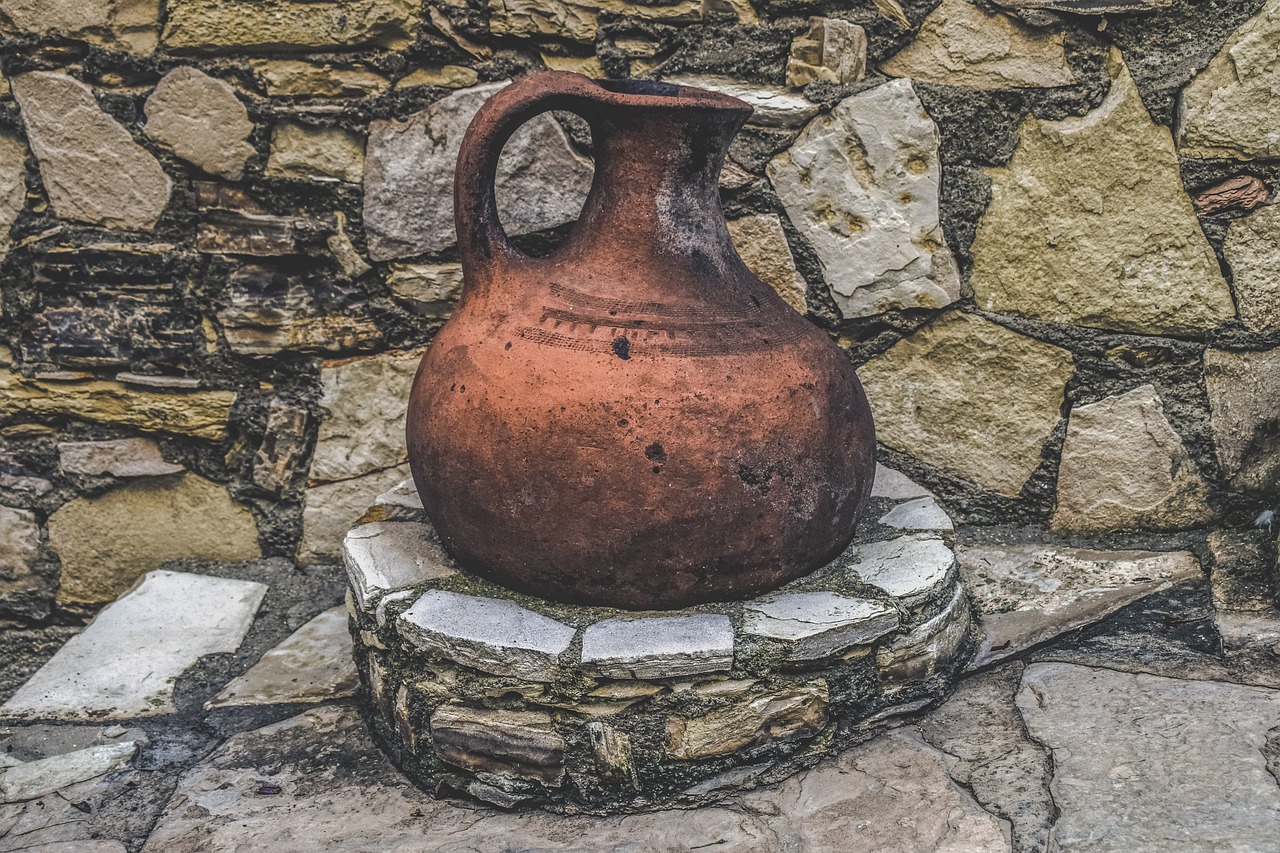
The Aesthetic Appeal of Crystalline Pottery
The beauty of crystalline pottery is nothing short of captivating. Each piece is a unique canvas that showcases the delicate interplay of colors and patterns, making it a true masterpiece of ceramic art. Imagine holding a vase that seems to dance with colors, where the crystalline formations resemble a starry night sky or the intricate patterns of a snowflake. This is the magic that crystalline pottery brings to life, combining artistry with the unpredictable nature of the glazing and firing processes.
One of the most striking features of crystalline pottery is its visual impact. The crystalline patterns that emerge during the firing process are not just random; they are the result of careful planning and technique. When a potter applies glaze to a piece, they are not just coating it; they are setting the stage for a spectacular show of color and form. The crystals that grow during firing create a depth that draws the viewer in, making each piece a conversation starter. It’s like looking into a miniature universe, where each swirl and sparkle tells a story.
As we explore the aesthetic appeal of crystalline pottery, we can't overlook the color variations that make each piece distinct. From deep blues and lush greens to vibrant reds and soft pastels, the palette is as diverse as nature itself. These colors are influenced by the types of glazes used and the firing techniques employed. For instance, a piece fired in a reduction atmosphere may exhibit richer, more intense colors, while one fired in an oxidation atmosphere may showcase softer hues. The interaction between the glaze and the clay body is a dance of chemistry that results in breathtaking visual effects.
Moreover, the patterns formed in crystalline pottery are a fascinating blend of art and science. The growth of crystals is not merely a random occurrence; it is a process influenced by factors such as temperature, cooling rates, and the composition of the glaze. As the piece is heated, the glaze melts and begins to form crystals. When cooled, these crystals create stunning designs that can be both symmetrical and organic. This unique characteristic makes crystalline pottery not only a joy to behold but also a subject of study for those interested in the science of ceramics.
To further appreciate the aesthetic appeal of crystalline pottery, consider the following aspects:
- Textural Variety: The surface of crystalline pottery can range from smooth to rough, depending on the glaze and firing technique. This textural diversity adds another layer of interest to each piece.
- Unique Forms: Crystalline pottery can be shaped into various forms, from functional items like bowls and plates to purely decorative pieces. Each form can highlight the crystalline patterns in different ways.
- Artistic Expression: Potters often infuse their personality and style into their creations, making each piece a reflection of the artist's vision and creativity.
In conclusion, the aesthetic appeal of crystalline pottery lies not only in its visual beauty but also in the intricate processes that bring each piece to life. It is an art form that marries creativity with science, resulting in objects that are as enchanting as they are functional. Whether you are a collector, a potter, or simply an admirer of beautiful things, crystalline pottery offers a glimpse into a world where art and nature intertwine.
1. What is crystalline pottery?
Crystalline pottery is a unique form of ceramic art that features stunning crystalline patterns formed during the glazing and firing processes.
2. How are the crystal patterns created?
The crystal patterns are formed through a combination of glaze composition, firing temperature, and cooling rates, which influence the growth of crystals on the pottery surface.
3. Can I create my own crystalline pottery?
Yes! With the right tools, materials, and techniques, anyone can try their hand at creating crystalline pottery. It’s a rewarding process that allows for personal expression.
4. What types of glazes are used in crystalline pottery?
There are various types of glazes used, including transparent and opaque glazes, each contributing different effects and colors to the final piece.
5. Is crystalline pottery safe for food use?
Many crystalline pottery pieces are food-safe, but it's important to check the specific glaze used and ensure it meets food safety standards.
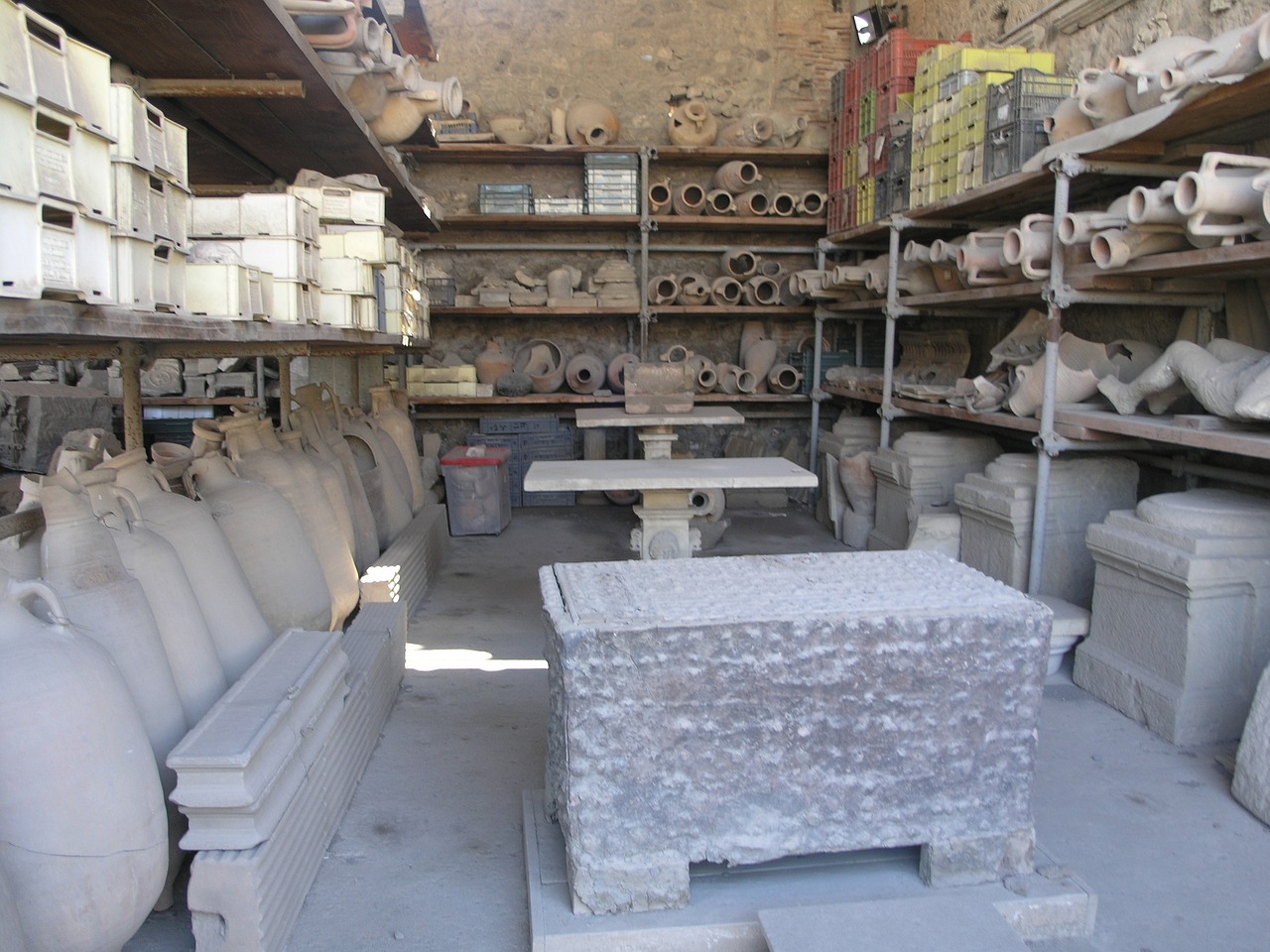
Color Variations
When it comes to crystalline pottery, one of the most captivating aspects is the stunning color variations that can be achieved. The interplay of glazes and firing techniques results in a vibrant spectrum of hues, transforming each piece into a one-of-a-kind masterpiece. Imagine a sunset captured in a bowl, or the deep ocean reflected in a vase—these are the kinds of visual experiences that crystalline pottery can evoke.
The color variations in crystalline pottery are not merely superficial; they are the result of complex chemical reactions that occur during the firing process. Different glazes contain various minerals and oxides that react to heat in unique ways. For instance, copper oxide can produce rich greens and blues, while iron oxide can yield warm reds and browns. The temperature and atmosphere in the kiln also play a crucial role, affecting how these colors manifest on the surface of the pottery.
One fascinating phenomenon is the way that colors can change depending on the thickness of the glaze. A thicker application might result in darker, more saturated colors, while a thinner layer can create a translucent effect, allowing the underlying clay body to influence the final appearance. This layering technique not only adds depth but also enhances the overall aesthetic appeal, making the piece more dynamic and visually engaging.
Moreover, the firing atmosphere—whether oxidizing or reducing—can dramatically alter the colors achieved. In an oxidizing atmosphere, where oxygen is plentiful, colors tend to be brighter and more vibrant. Conversely, in a reducing atmosphere, where oxygen is limited, colors can become muted or take on unexpected shades. This variability is part of what makes each piece of crystalline pottery a unique expression of the artist's vision.
To illustrate the diversity of colors found in crystalline pottery, consider the following table that showcases some common glazes and the colors they can produce:
| Glaze Type | Color Outcomes |
|---|---|
| Copper Oxide | Turquoise, Green, Blue |
| Iron Oxide | Red, Brown, Yellow |
| Cobalt Oxide | Deep Blue, Purple |
| Manganese Dioxide | Black, Brown |
In summary, the color variations in crystalline pottery are not just about aesthetics; they reflect the intricate dance of chemistry and artistry. Each piece tells a story through its colors, inviting viewers to explore the depths of its beauty. Whether you're a collector, an artist, or simply an admirer, the vibrant hues of crystalline pottery are sure to leave a lasting impression.
- What is crystalline pottery? Crystalline pottery is a type of ceramic art that features unique crystalline patterns formed during the glazing and firing process.
- How are the colors achieved in crystalline pottery? Colors are achieved through the use of various glazes and the firing atmosphere, which can alter the appearance of the glazes based on temperature and chemical reactions.
- Can I create my own crystalline pottery at home? Yes! With the right tools, materials, and techniques, you can experiment with creating your own crystalline pottery.

Pattern Formation
When it comes to crystalline pottery, the formation of patterns is nothing short of a captivating dance between science and art. As the clay is fired, the glazes undergo a remarkable transformation, leading to the emergence of stunning crystalline designs that are unique to each piece. But how exactly do these mesmerizing patterns come to life? It all begins with the precise control of temperature and the atmosphere within the kiln during the firing process.
The formation of crystals in pottery is a delicate balance of several factors, including the chemical composition of the glaze, the cooling rate, and the firing temperature. Each of these elements plays a critical role in determining the size, shape, and distribution of the crystals that form on the surface of the pottery. For example, a higher temperature can lead to larger crystals, while a slower cooling rate allows for more intricate patterns to develop. It's like orchestrating a symphony, where every note must be perfectly timed to create a beautiful melody.
One fascinating aspect of pattern formation is the randomness that can occur. While artists can control many variables, the final outcome often surprises even the most seasoned potters. This unpredictability is what makes each piece of crystalline pottery a true work of art. You might find yourself staring at a bowl or vase, mesmerized by the way the crystals have formed, as if nature itself collaborated with the artist to create something extraordinary.
To give you a clearer picture of how these patterns can vary, consider the following table that highlights some common types of crystalline patterns found in pottery:
| Pattern Type | Description |
|---|---|
| Starburst | Radiating crystal formations that resemble a star. |
| Veining | Delicate lines of crystals that create a marbled effect. |
| Floral | Patterns that mimic the appearance of flowers or petals. |
| Geometric | Symmetrical shapes that form intricate designs. |
Ultimately, the beauty of crystalline pottery lies in its ability to surprise both the artist and the observer. Each piece tells a story through its patterns, inviting you to explore the intricate details that make it unique. So, the next time you admire a piece of crystalline pottery, take a moment to appreciate the wonderful interplay of nature and craftsmanship that has brought that pattern to life. It's a reminder that art is not just about the final product; it's about the journey and the unexpected beauty that can emerge along the way.
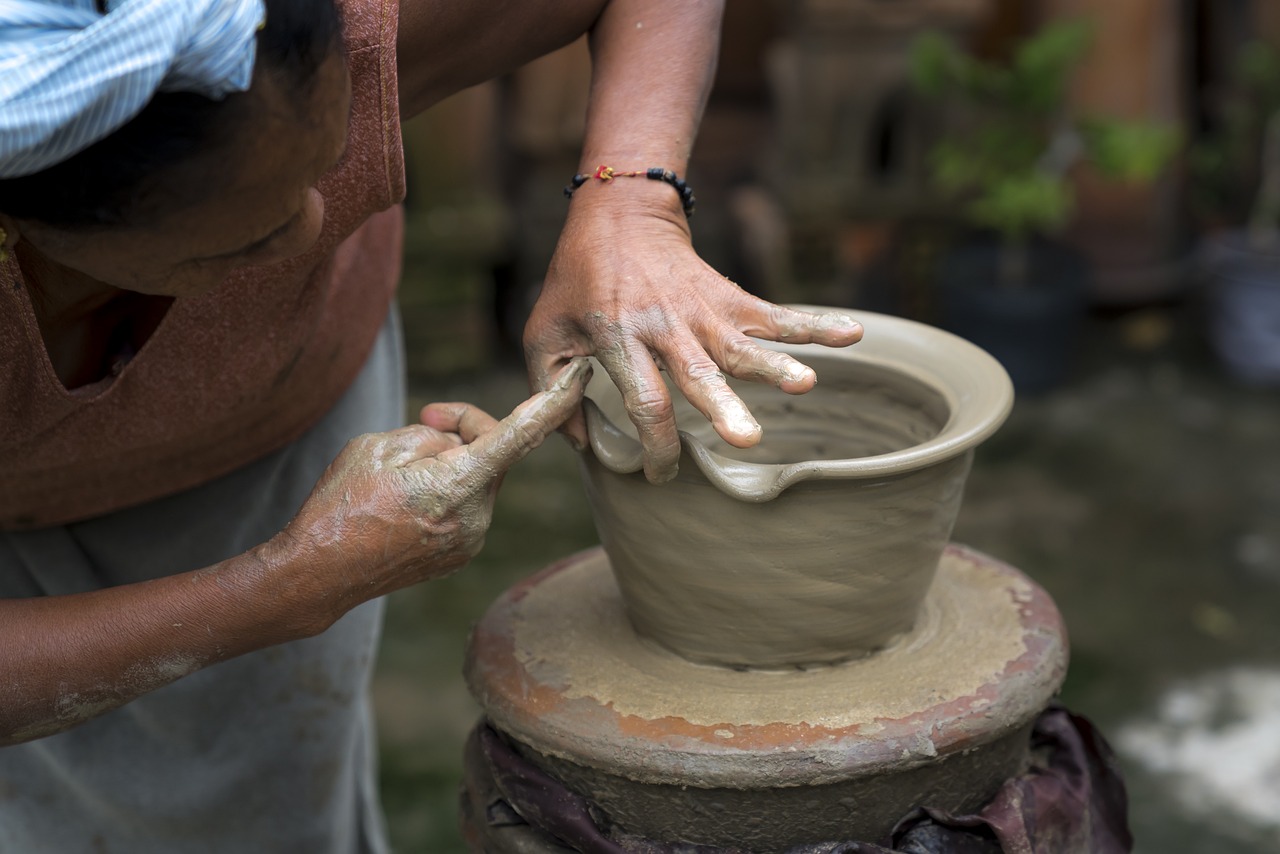
Creating Your Own Crystalline Pottery
Have you ever gazed at a beautifully crafted piece of crystalline pottery and thought, "I wish I could create something like that!"? Well, you absolutely can! With a bit of **patience**, some essential tools, and a splash of creativity, you can dive into the mesmerizing world of crystalline pottery. This section will guide you through the basics, ensuring you have everything you need to embark on your artistic journey.
First off, let’s talk about the essential tools and materials you’ll need. Think of these items as your trusty sidekicks in this creative adventure. Here’s a quick rundown:
- Clay: Choose a stoneware or porcelain clay that is suitable for crystalline glazing.
- Glazes: You’ll need specific crystalline glazes that promote crystal growth during firing.
- Potter's Wheel: If you want to throw your pieces, a potter's wheel is essential.
- Firing Kiln: A kiln that can reach high temperatures is a must for the firing process.
- Basic Tools: This includes a sponge, rib, wire cutter, and trimming tools.
Now that you have your tools ready, it’s time to get your hands dirty! The process of creating crystalline pottery can be broken down into a few straightforward steps:
- Prepare Your Clay: Start by wedging your clay to eliminate air bubbles and ensure an even consistency.
- Shape Your Piece: Whether you’re hand-building or using a wheel, shape your clay into your desired form.
- Drying: Allow your piece to dry to a leather-hard state before moving on to the next steps.
- Apply Glaze: Carefully apply your chosen crystalline glaze using your preferred method (dipping, brushing, or spraying).
- Firing: Fire your piece in the kiln, carefully controlling the temperature and atmosphere to promote crystal growth.
Each of these steps is a crucial part of the process, and mastering them will allow you to create stunning pieces that reflect your unique style. Remember, practice makes perfect! Don’t be discouraged if your first few attempts don’t turn out as expected; each piece is a learning experience.
As you experiment with different glazes and firing techniques, you’ll find that the magic of crystalline pottery lies in its unpredictability. Each firing can yield different results, making every piece a one-of-a-kind masterpiece. So, embrace the surprises, and let your creativity flow!
To help you on your journey into the world of crystalline pottery, here are some frequently asked questions:
| Question | Answer |
|---|---|
| What type of clay is best for crystalline pottery? | Stoneware or porcelain clay is recommended due to their ability to withstand high temperatures. |
| Can I use any glaze for crystalline pottery? | No, you need specific crystalline glazes designed to promote crystal growth during firing. |
| How can I achieve different crystal patterns? | Experiment with various glazes, firing temperatures, and cooling rates to create unique patterns. |
| Is it necessary to have a kiln? | Yes, a kiln is essential for firing your pottery to achieve the desired results. |
With this knowledge and your newfound enthusiasm, you’re ready to embark on your crystalline pottery journey. So grab your tools, unleash your creativity, and let the magic of crystalline pottery transform your artistic expression!

Essential Tools and Materials
When it comes to creating your own crystalline pottery, having the right tools and materials is crucial. Think of it like cooking; without the right ingredients and utensils, your dish might not turn out as expected. In the world of crystalline pottery, each tool plays a vital role in transforming raw materials into stunning works of art. So, let’s dive into what you’ll need to get started on this exciting journey.
First and foremost, you'll need clay. The type of clay you choose can significantly affect the final outcome of your pottery. Stoneware clay is a popular choice due to its durability and ability to withstand high firing temperatures. However, you might also want to experiment with porcelain or earthenware, each offering unique textures and finishes.
Next on the list is glaze. This is where the magic truly begins! Glazes not only add color but also create those mesmerizing crystalline patterns. You can purchase pre-made glazes or mix your own, but make sure to choose glazes specifically designed for crystalline pottery. They usually contain materials that promote crystal growth during the firing process.
In addition to clay and glaze, you’ll require some essential tools:
- Potter's Wheel: Ideal for shaping your pottery, a wheel allows for more uniform pieces.
- Kiln: This is where the firing magic happens. A good kiln is essential for achieving the correct temperatures needed for crystalline growth.
- Brushes and Sprayers: For applying glazes, different brushes and spray guns can help you achieve varied textures and effects.
- Wooden Tools: These are perfect for shaping and detailing your pieces without scratching the surface.
- Ruler and Calipers: Precision is key in pottery, especially if you’re aiming for specific dimensions.
Lastly, don’t forget about your workspace. A clean, organized area will help keep your creativity flowing and ensure that you have everything at your fingertips. Consider investing in a sturdy work table, plenty of storage for your materials, and even some protective gear, like gloves and an apron, to keep yourself safe and clean.
In summary, the essential tools and materials for creating crystalline pottery include high-quality clay, specialized glazes, and a variety of tools for shaping and firing. With these in hand, you’ll be well on your way to crafting your own stunning ceramic masterpieces!
Q: Can I use any type of clay for crystalline pottery?
A: While you can experiment with different types of clay, stoneware is highly recommended due to its durability and ability to withstand high temperatures.
Q: How do I achieve the best crystal patterns?
A: The key is in the glaze and firing process. Use glazes specifically designed for crystalline pottery and ensure you follow the firing schedule carefully.
Q: Is it necessary to have a kiln?
A: Yes, a kiln is essential for firing your pottery. It allows you to reach the high temperatures necessary for crystalline growth.
Q: Can I create crystalline pottery without a potter's wheel?
A: Absolutely! While a potter's wheel can help with uniformity, you can hand-build your pottery using various techniques like pinch pots or slab construction.
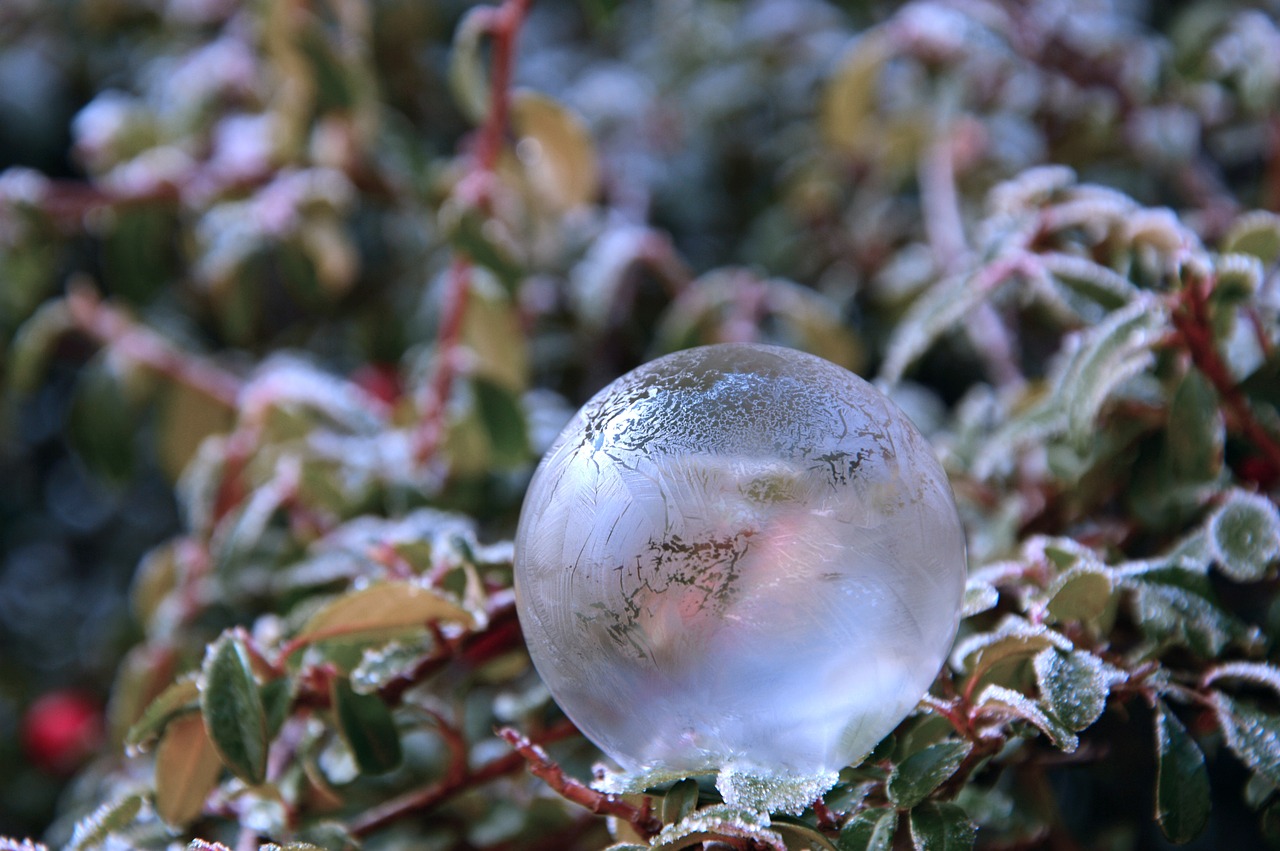
Step-by-Step Guide
Creating your own crystalline pottery can be an incredibly rewarding experience, allowing you to express your creativity while engaging in a time-honored craft. To help you embark on this artistic journey, we’ve crafted a that breaks down the process into manageable parts. Whether you’re a complete novice or have some experience in pottery, these steps will guide you toward creating stunning crystalline pieces.
First and foremost, you’ll need to gather your essential tools and materials. The basics include:
- Clay: Choose a stoneware or porcelain clay that can withstand high temperatures.
- Glazes: Look for specially formulated crystalline glazes that promote crystal growth.
- Pottery Wheel: A wheel will help you shape your pieces, though hand-building is also an option.
- Tools: Basic pottery tools, including rib tools, trimming tools, and sponges.
- Firing Kiln: An electric or gas kiln capable of reaching the necessary temperatures for crystalline glazes.
Once you have your materials ready, the first step is to prepare your clay. This involves wedging the clay to remove air bubbles and ensure an even consistency. After that, you can shape your piece on the pottery wheel or by hand. Don’t rush this part; take your time to mold the clay into your desired form. Remember, the beauty of crystalline pottery often lies in the unique shapes and contours of each piece.
After shaping, it’s time to let your piece dry until it reaches the leather-hard stage. This stage is crucial because it allows for trimming and refining without the clay being too soft. Once it’s leather-hard, you can use your trimming tools to refine the shape and add any decorative elements you desire.
Next comes the glazing process. This is where the magic truly begins! Apply your crystalline glaze using one of several methods:
- Dipping: Submerge your piece in the glaze for an even coating.
- Spraying: Use a spray gun for a light, even application.
- Brushing: Brush on the glaze for more control and detail.
Whichever method you choose, ensure that the glaze is applied evenly to avoid any unwanted effects during firing.
Once your piece is glazed, it’s time for the firing process. Carefully place your pottery in the kiln, ensuring it’s positioned correctly to allow for even heat distribution. Set the kiln to the appropriate temperature for the crystalline glaze you’re using, typically around 2200°F (1204°C). The firing process is where the crystals will begin to form, and it’s essential to maintain the right atmosphere in the kiln to achieve the desired results.
After the firing is complete, allow the kiln to cool down gradually. Once it’s safe to open, you’ll unveil your masterpiece. The moment of truth is always exciting—will you see the stunning crystalline patterns you hoped for? Each piece is unique, and the beauty of crystalline pottery lies in its unpredictability.
Finally, don’t forget to clean and polish your finished piece. This step enhances the visual appeal and prepares your pottery for display or use. With practice and patience, you’ll find that creating crystalline pottery can be as mesmerizing as the pieces themselves.
Q1: What is crystalline pottery?
A1: Crystalline pottery is a unique ceramic art form that features beautiful crystalline patterns formed during the glazing and firing process.
Q2: Can beginners try crystalline pottery?
A2: Absolutely! While it does require some specific techniques and materials, beginners can certainly create their own crystalline pottery with practice and guidance.
Q3: What types of clay are best for crystalline pottery?
A3: Stoneware and porcelain clays are ideal for crystalline pottery as they can withstand the high temperatures required for firing.
Q4: How do I achieve the best crystal growth?
A4: Proper glazing application, precise firing temperatures, and maintaining the right atmosphere in the kiln are crucial for successful crystal growth.
Frequently Asked Questions
- What is crystalline pottery?
Crystalline pottery is a unique form of ceramic art that features stunning patterns created by the growth of crystals during the glazing and firing process. It combines creativity and craftsmanship to produce breathtaking pieces that captivate the eye and the imagination.
- How did crystalline pottery originate?
The origins of crystalline pottery can be traced back to ancient cultures, where artisans experimented with glazing techniques and firing methods. Over time, this art form evolved through various cultures, influencing contemporary ceramic practices and inspiring modern artists to explore its enchanting beauty.
- What techniques are used in creating crystalline pottery?
The creation of crystalline pottery involves intricate techniques such as glazing, firing, and specific methods that facilitate crystal growth. Each technique plays a crucial role in the final aesthetic of the piece, showcasing the artist's skill and creativity.
- What types of glazes are used in crystalline pottery?
There are several types of glazes used in crystalline pottery, ranging from transparent to opaque. Each type offers unique visual effects and influences the final appearance of the piece, allowing artists to craft a diverse array of textures and colors.
- How does the firing process affect crystalline patterns?
The firing process is critical in crystalline pottery, as the temperature and atmosphere during firing directly influence the growth of crystals. Proper control of these factors is essential to achieving the desired crystalline patterns and ensuring the beauty of the final product.
- What tools and materials do I need to start making crystalline pottery?
To create crystalline pottery, you'll need essential tools such as clay, glazes, brushes, and a kiln. Additionally, having a good understanding of the materials and their properties will help you navigate the creative process more effectively.
- Can beginners create crystalline pottery?
Absolutely! While crystalline pottery may seem complex, beginners can certainly dive into this art form with the right guidance. Following a step-by-step guide and practicing the techniques will help anyone create their own stunning pieces.
- What are some common challenges in crystalline pottery?
Common challenges include controlling the firing process and achieving the desired crystal growth. However, with patience, practice, and a willingness to learn from mistakes, these challenges can be overcome, leading to beautiful results.

















